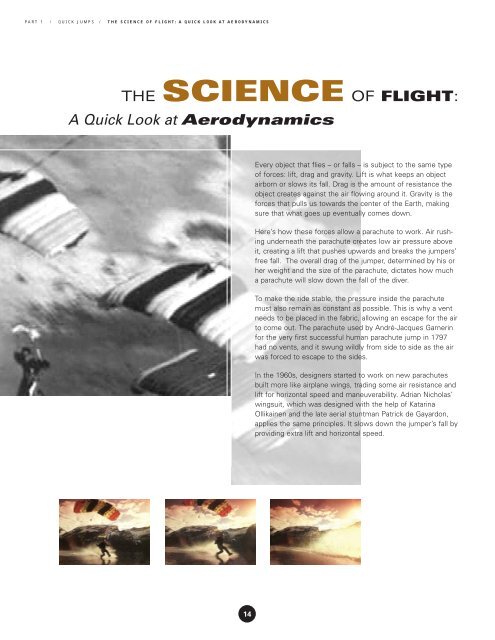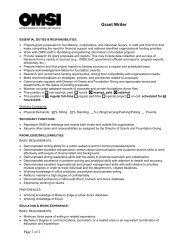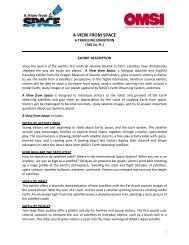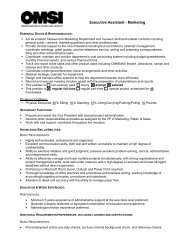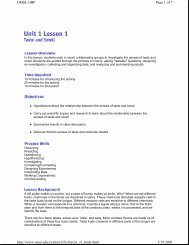ADRENALINE RUSH: THE SCIENCE OF RISK - Big Movie Zone
ADRENALINE RUSH: THE SCIENCE OF RISK - Big Movie Zone
ADRENALINE RUSH: THE SCIENCE OF RISK - Big Movie Zone
Create successful ePaper yourself
Turn your PDF publications into a flip-book with our unique Google optimized e-Paper software.
PART 1 / QUICK JUMPS / <strong>THE</strong> <strong>SCIENCE</strong> <strong>OF</strong> FLIGHT: A QUICK LOOK AT AERODYNAMICS<br />
<strong>THE</strong> <strong>SCIENCE</strong> <strong>OF</strong> FLIGHT:<br />
A Quick Look at Aerodynamics<br />
Every object that flies – or falls – is subject to the same type<br />
of forces: lift, drag and gravity. Lift is what keeps an object<br />
airborn or slows its fall. Drag is the amount of resistance the<br />
object creates against the air flowing around it. Gravity is the<br />
forces that pulls us towards the center of the Earth, making<br />
sure that what goes up eventually comes down.<br />
Here’s how these forces allow a parachute to work. Air rushing<br />
underneath the parachute creates low air pressure above<br />
it, creating a lift that pushes upwards and breaks the jumpers’<br />
free fall. The overall drag of the jumper, determined by his or<br />
her weight and the size of the parachute, dictates how much<br />
a parachute will slow down the fall of the diver.<br />
To make the ride stable, the pressure inside the parachute<br />
must also remain as constant as possible. This is why a vent<br />
needs to be placed in the fabric, allowing an escape for the air<br />
to come out. The parachute used by André-Jacques Garnerin<br />
for the very first successful human parachute jump in 1797<br />
had no vents, and it swung wildly from side to side as the air<br />
was forced to escape to the sides.<br />
In the 1960s, designers started to work on new parachutes<br />
built more like airplane wings, trading some air resistance and<br />
lift for horizontal speed and maneuverability. Adrian Nicholas’<br />
wingsuit, which was designed with the help of Katarina<br />
Ollikainen and the late aerial stuntman Patrick de Gayardon,<br />
applies the same principles. It slows down the jumper’s fall by<br />
providing extra lift and horizontal speed.<br />
14


